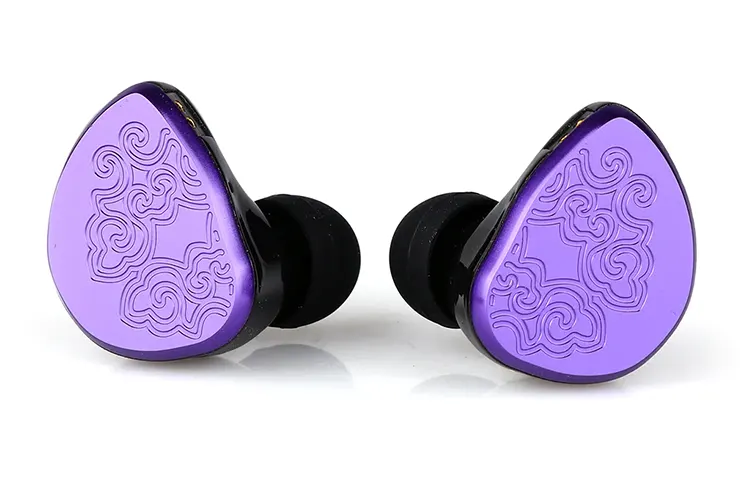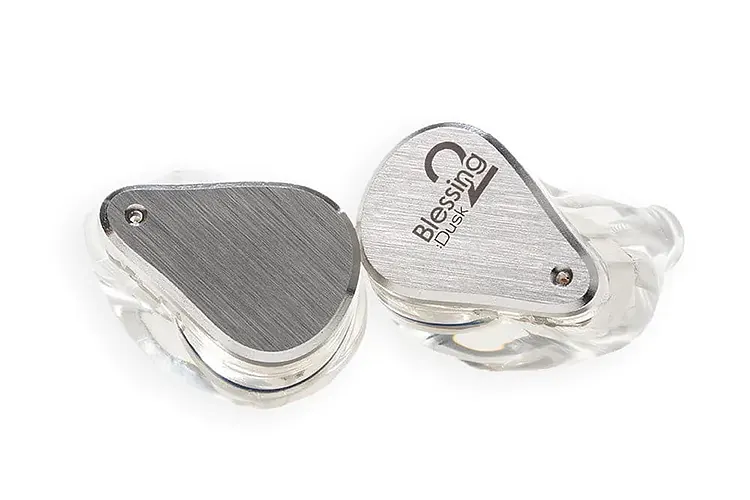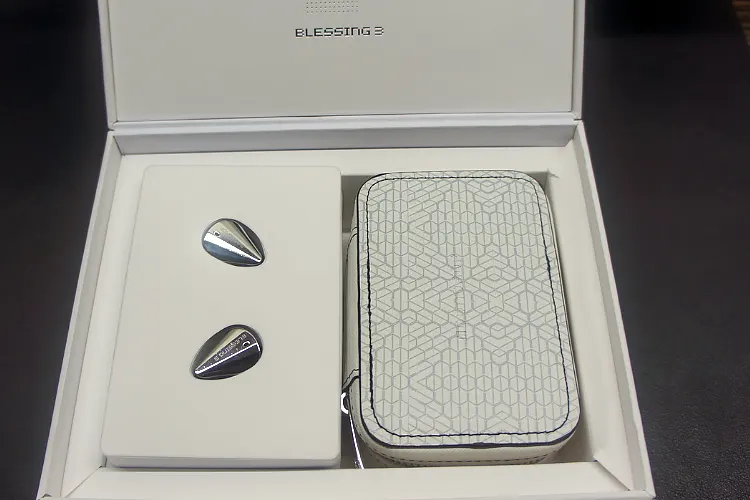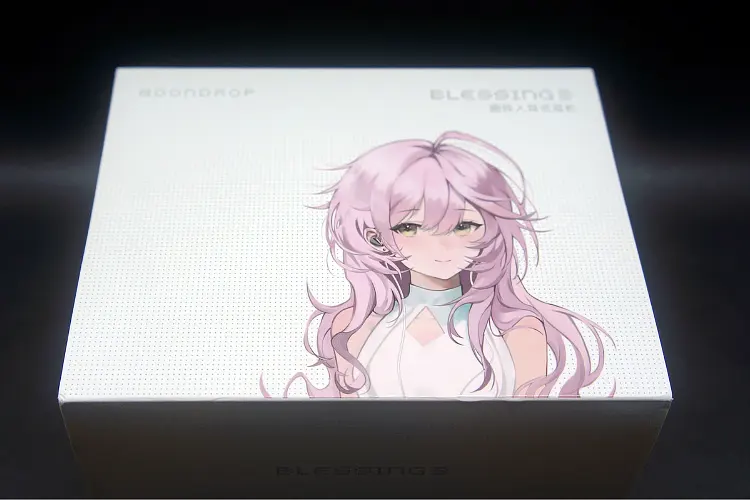Sound Impressions
Bass
The Blessing 3 bass is clean and tight, with good extension and impact. It has a linear response from sub-bass to mid-bass, without any noticeable peaks or dips. It does not bleed into the midrange or overpower other frequencies.
Unlike other IEMs that may be more appealing to bass heads, the comparative lack of an exaggerated rumble and hum towards the lower end of the frequency response may make the Blessing 3 sound less “atmospheric” or “warm”, but this is not what the set aims to do.
What immediately stands out is how well-controlled and textured the bass is, showing good detail and nuance. It can handle complex bass lines and fast transients without any distortion or congestion. Do not be mistaken, it can still deliver satisfying rumble and slam, but it never comes off boomy or muddy.
The Blessing 3 plays back the right amount of bass at the right time, with very good detail and speed. The low frequencies never overstay their welcome and never feel bloated.
Mids
The mids on the Blessing 3 are textured and engaging, with good articulation and detail. It has a slight dip in the lower mids, which manifests as the overall tonality being less “warm” and male vocals having less “body”, but this also gives it a more neutral tonality for audiophiles looking for uncolored playback.
It has a very slight emphasis on the upper mids, which enhances vocal presence in female singers, and contributes to the articulated nature of most string instruments.
The vocal presentation offers very good emotion and nuance. Listening to vocal-focused tracks is a treat, the vocals never get overshadowed or mixed up with string instruments, ensuring that the mids are represented with no vagueness whatsoever.
One of the immediate standouts is how textured and organic string instruments in acoustic music sound. This articulation is evident not just in acoustic music, pop tracks with complex arrangements and layers are particularly impressive with the Blessing 3.
Through my tests with the Blessing 3, I often found myself hearing new background vocals in tracks that I’ve been listening to for years.
Another standout is the ability to playback synth notes with very good texture. Its ability to show the nuanced change in synth notes from beginning to end makes other IEMs sound flat in comparison.
The sheer detail retrieval in the mids, in conjunction with its neutral tonality enables it to playback music with very good emotion.
It’s difficult to stray too far from objectivity when reviewing a piece of technology, but Blessing 3 is the only IEM in recent memory that was able to give me the “chill-inducing” feeling I felt when I started getting into the hobby years ago.
Treble
The treble of the Blessing 3 is natural, with good extension and sparkle. It has a smooth response from the lower treble to the upper treble, without any noticeable peaks or dips. It does not sound bright or harsh but also does not lack air or energy.
The treble has an extremely pleasing tonality that never came off as fatiguing. Despite this, I was still able to pick out details in cymbals and hi-hats, making different cymbal strikes and strike patterns easily differentiable.
Interestingly, despite the Blessing 3 not being particularly sibilant, I observed that it had better detail retrieval than other more sibilant IEMs. In my experience, good top-end detail retrieval often came with some sibilance, but I was happy to be proven wrong by the Blessing 3s.
Notes on the high end are played back with good speed and precision. Strikes from crash cymbals are quick and never stay their welcome, contributing to the clean and transparent tonality of the Blessing 3.
Imaging
The imaging of the Blessing 3 is excellent, showing high accuracy and precision in reproducing spatial cues and directional information. It can create a realistic soundstage with accurate placement and movement of sounds across left-right-center axes.
Throughout my testing, I constantly found myself being able to isolate specific sounds and instruments within complex mixes and masters.
Going through my back catalog removed all vagueness in tracks I’ve been familiar with for decades. It was able to precisely show how specific instruments and techniques created the waves and walls of sound I’ve been listening to for years.
To a certain degree, Blessing 3 changed the way I listen to music because of its ability to effectively isolate different layers and tracks. I now find myself subconsciously deconstructing tracks and being able to identify how different instruments were used in different combinations to create the songs I love.

Select Comparisons
TANGZU Wu Zetian
$149
Technical
The TANGZU Wu ZeTian uses a single driver setup with a 14.5mm planar magnetic driver on each side. They have an impedance of 16Ω and a sensitivity of 100dB/mW.
The Blessing 3 makes use of a dual 10 mm dynamic driver and four balanced armature drivers with an impedance and sensitivity of 14.8 Ohms and 120dB/Vrms, making the Blessing 3 slightly more efficient. Both IEMs make use of a standard 0.78mm two-pin cable connector.
Design
Both IEMs make use of a 3D-printed DLP shell, with the main design difference being their faceplate.
The Tangzu makes use of a CNC-machined aluminum face plate with a traditional Chinese pattern and an anodized purple finish, inspired by the empress Wu ZeTian during the Tang Dynasty, whilst the Blessing 3 comes with a polished stainless-steel faceplate with a mirror-like finish.
The Tangzu has a larger shell, giving it a worse fit in the ear, but the Blessing 3 is heavier than the Tangzu by a significant amount. The Tangzu is slightly more uncomfortable since it tends to fall off a bit more but the Blessing 3’s increased weight is emphasized with prolonged listening.
Performance
The Tangzu is significantly more V-shaped than the Blessing 3, with more emphasis being placed on both the bass and treble regions.
In Pop and Hip-Hop tracks, the Tangzu comes off as more “exciting”, but it is extremely clear that it’s detail retrieval and technical capabilities are nowhere close to that of the Blessing 3.
The Tangzu has harder-hitting bass, especially towards the midbass region. 808s and hits from bass drums are more emphasized but are not nearly as controlled or refined as the bass on the Blessing 3.
The Blessing 3s bass may come off as lacking in Hip-hop and modern pop music, but its ability to articulate nuance and texture in bass hits simply outclasses the Tangzu’s technicalities.
The mids on the Tangzu come off as recessed when compared to that of the Blessing 3. String instruments and brass instruments come off as one-dimensional when compared directly against the Blessing 3. The vocals on the Tangzu come off as flat and emotionless.
The treble region is more emphasized on the Tangzu, but surprisingly, it comes off as less detailed when compared to the less sibilant Blessing 3s. As I mentioned previously, sibilant IEMs usually come off as more detailed, but in this case, the neutral-sounding Blessing 3 had superior detail retrieval.
Cymbal hits in the Tangzu overstay their welcome when compared to the Blessing 3, making instruments and sounds overlap with one another and hurting its imaging performance in the process.

Moondrop Blessing 2 Dusk
$329.99
Technical
The Moondrop Blessing 2 Dusk is another hybrid IEM from Moondrop that features one 10mm dynamic driver and four balanced armatures as opposed to the dual 10 mm dynamic driver and four balanced armature drivers utilized by the Blessing 3.
The Blessing 2 Dusk has an impedance and sensitivity of 22 Ohms and 117 dB respectively, whilst the Blessing 3 has an impedance and sensitivity of 14.8 Ohms and 120dB/Vrms, making the latter slightly easier to power. Both IEMs make use of a standard 0.78mm two-pin connector.
Design
Making use of a 3D printed shell, the build, and design of the Blessing 2 Dusk is quite similar. The main difference comes in the face plate. The Blessing 2 Dusk comes with a brushed metal faceplate that can come engraved with a waifu, whilst the Blessing 3 comes with a polished stainless-steel faceplate with a mirror-like finish.
The Blessing 3 is slightly lighter than the Blessing 2 Dusk, and its nozzle is also slightly thinner nozzle than that of the Blessing 2 Dusk. This makes the Blessing 3 more comfortable than the Blessing 2 Dusk, despite both IEMs not being particularly comfortable.
Performance
The Dusk has a warmer and smoother tuning with more emphasis on the mid-bass and lower mids, and less emphasis on the upper mids and treble.
This makes the Dusk come off as lusher and warmer. The Blessing 3 has a clearer tuning than the Dusk, with more emphasis on the sub-bass and upper mids, and less emphasis on the mid-bass and lower mids. The Blessing 3 has a slight edge over the Dusk in terms of imaging, separation, and soundstage.
The Blessing 3 had better-textured bass; however, the Dusk had more bass quantity. This makes the Dusk more exciting with Hip Hop music, but it’s not able to play back the intricate details of different layers as well.
The mids are more articulate and dynamic on Blessing 3. Vocals are presented with more emotion, and string instruments sounded more articulate and natural. Male vocals have more weight when played through the Dusk, but they were more detailed through the Blessing 3.
The highs are more detailed and emphasized through Blessing 3 with slightly more sibilance with the Dusk less sibilant. By no means can The Dusk be considered a set with sub-par detail retrieval, however, Blessing 3 improves upon its already impressive detail retrieval.
Our Verdict
Despite the legendary reputation and hype of the Blessing 2 family, Moondrop was able to leverage its additional R&D know-how to somehow improve upon the original Blessing 2.
The Moondrop Blessing 3 has excellent imaging performance, especially for the price. Pair that with its neutral tonality with slight elevations towards both ends of the frequency response, and the Blessing 3 technically proficient set of IEMs that are also enjoyable to listen to every day.
Fans of Blessing 2 Dusk may not be as fond of the new colder tonality that may not be to everyone’s taste. However, its improved technical performance means that Dusk fans should at least give the latest iteration a chance.
Outside of some minor comfort issues and the baffling exclusion of Spring tips, this is a very good all-around set of IEMs and should be on everyone’s list.
Moondrop Blessing 3 Specifications
- Driver Type: 2 DD + 4BA Hybrid Driver
- Plug: 3.5mm single-ended standard 0.78mm-2pin
- Frequency Response: 10Hz -30kHz
- Impedance: 14.8Ω±15%.
- Sensitivity: 120dB/Vrms.
- THD: ≤0.5$%.



